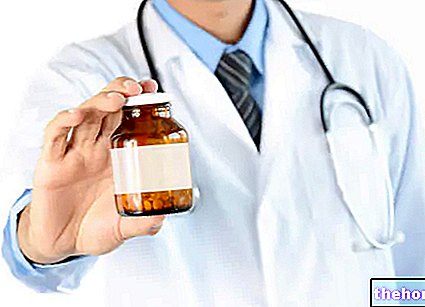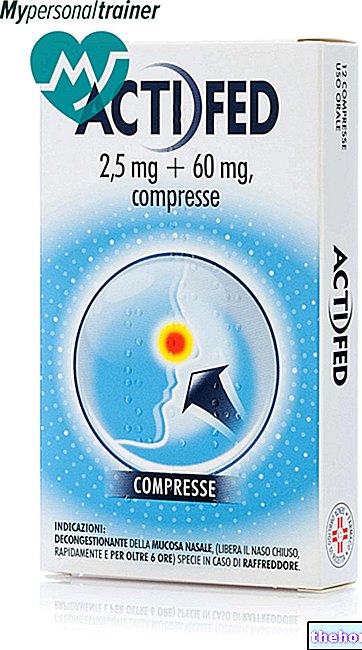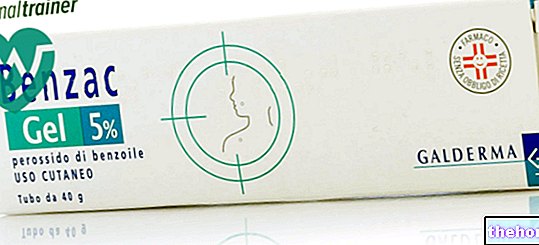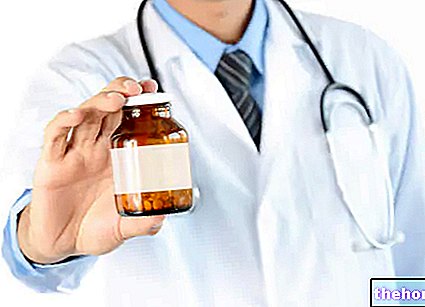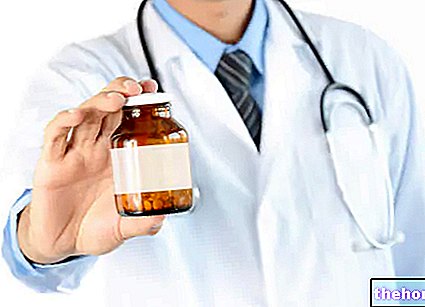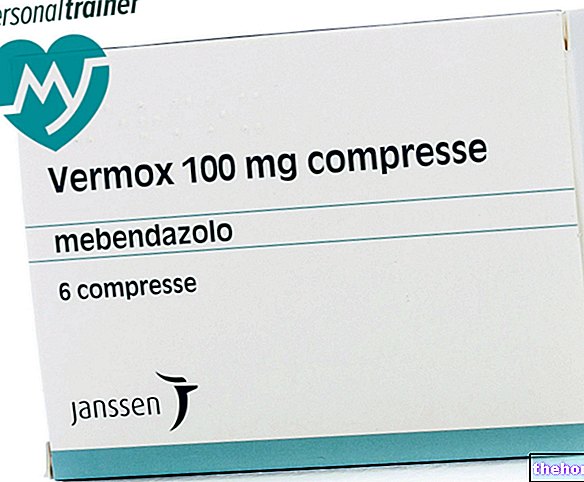Active ingredients: Nebivolol
LOBIVON 5 mg Tablets
Indications Why is Lobivon used? What is it for?
Lobivon contains nebivolol, a cardiovascular drug belonging to the group of selective beta-blocking agents (ie with a selective action on the cardiovascular system). Lobivon prevents the heart rate from increasing, controls the strength of the heart pump. It also dilates blood vessels which helps lower blood pressure. It is used to treat high blood pressure (hypertension). Lobivon is also used to treat mild and moderate chronic heart failure as an adjunct to other therapies in elderly patients 70 years of age or older.
Contraindications When Lobivon should not be used
Do not take Lobivon
- If you are allergic to nebivolol or any of the other ingredients of this medicine
If you have one or more of the following disorders:
- Low blood pressure
- Severe circulatory problems in the arms or legs
- Very low heart rate (less than 60 beats per minute)
- Other severe heart rhythm disturbances (e.g. 2nd and 3rd degree atrioventricular block and cardiac conduction disturbances).
- heart failure, recently onset or worsening, or if you are being treated for the treatment of circulatory shock due to acute heart failure by intravenous administration to help the heart function
- Asthma or wheezing (current or previous)
- Untreated phaeochromocytoma, a tumor located above the kidneys (in the adrenal glands)
- Impaired liver function
- Metabolic disorder (metabolic acidosis) such as diabetic ketoacidosis.
Precautions for use What you need to know before taking Lobivon
Talk to your doctor or pharmacist before taking Lobivon.
Tell your doctor if you notice or develop any of the following symptoms:
- Abnormally slow heartbeat
- A type of chest pain due to the spontaneous onset of a heart cramp called Prinzmetal's angina
- Untreated chronic heart failure
- 1st degree heart block (a mild heart conduction disorder that affects the heart rhythm)
- Poor circulation in the arms and legs, for example Raynaud's disease or syndrome, cramp-like pains while walking
- Prolonged breathing difficulty
- Diabetes: This medicine does not affect blood glucose levels, but it may mask the warning signs of low glucose levels (e.g. palpitations, fast heart rate).
- Overactive thyroid gland: This medicine can mask the signals of an abnormally fast heart rate caused by this condition
- Allergy: This medicine can intensify reactions to pollen or other substances to which you are allergic
- Psoriasis (a skin disease causing pink scaly patches) or if you have suffered from psoriasis in the past
- If you need to have surgery, always tell your anesthetist that you are being treated with Lobivon before undergoing anesthesia.
If you have severe kidney problems, do not take Lobivon to treat heart failure and tell your doctor.
During the initial phase, chronic heart failure therapy will need to be monitored by an experienced physician
Do not abruptly stop this therapy unless directed and evaluated by your doctor.
For those who carry out sporting activities: the use of the drug without therapeutic necessity constitutes doping and can in any case determine positive anti-doping tests.
Children and adolescents
Due to the lack of data on the use of the product in children and adolescents, the use of Lobivon is not recommended for these age groups.
Interactions Which drugs or foods can modify the effect of Lobivon
Tell your doctor or pharmacist if you are taking, have recently taken or might take any other medicines.
Always tell your doctor if you are using or have recently been given any of the following medicines in addition to Lobivon:
- Medicines to control blood pressure or for heart problems (e.g. amiodarone, amlodipine, cibenzoline, clonidine, digoxin, diltiazem, disopyramide, felodipine, flecainide, guanfacine, hydroquinidine, lacidipine, lidocaine, methyldopa, mexiletine, nifardipine, nimodipine, nitrendipine, propafenone, quinidine, rilmenidine, verapamil).
- Sedatives and therapies for psychosis (a mental illness), such as barbiturates (also used for epilepsy), phenothiazine (also used for vomiting and nausea) and thioridazine.
- Medicines for depression, eg amitriptyline, paroxetine, fluoxetine.
- Medicines used for anesthesia during surgery.
- Medicines for asthma, sinusitis or certain eye disorders such as glaucoma (increased pressure in the eye) or dilation (widening) of the pupil.
- Baclofen (an antispasmodic drug); Amifostine (a protective medicine used during cancer treatment)
All of these medicines, as well as nebivolol, can affect blood pressure and / or heart function.
- Medicines to treat excess stomach acid or ulcers (antacid medicines), eg cimetidine: Take Lobivon with meals and the antacid medicine between meals.
Lobivon with food and drink
Refer to section Dose and method of administration.
Warnings It is important to know that:
Pregnancy and breastfeeding
Lobivon should not be used during pregnancy unless clearly necessary. Use while breastfeeding is not recommended. If you are pregnant or breast-feeding, think you may be pregnant or are planning to have a baby, ask your doctor or pharmacist for advice before taking this medicine.
Driving and using machines
This medicine can cause dizziness or fatigue. If these conditions occur, do not drive or use machines.
Lobivon contains lactose
This product contains lactose. If you have been told by your doctor that you have an intolerance to some sugars, contact your doctor before taking this medicine.
Dosage and method of use How to use Lobivon: Dosage
Always take this medicine exactly as your doctor has told you. If in doubt, consult your doctor or pharmacist. Lobivon can be taken before, during or after meals, or alternatively even without food. It is preferable to swallow the tablet with water.
Treatment of increased blood pressure (hypertension)
- The usual dose is 1 tablet per day. The dose should preferably always be taken at the same time.
- In the elderly and in patients with kidney disorders, therapy usually starts with ½ (half) tablet per day.
- The therapeutic effect on blood pressure becomes evident after 1-2 weeks of treatment. Sometimes the optimal effect is achieved only after 4 weeks.
Treatment of chronic heart failure
- Treatment will be initiated and closely supervised by an experienced physician.
- Your doctor will start treatment with ¼ (quarter) tablet per day. After 1-2 weeks the dosage can be increased to ½ (half) tablet per day, then to 1 tablet per day and then to 2 tablets per day until the appropriate dose required for your condition is reached. Your doctor will prescribe the appropriate dose for you at each stage of treatment and you will need to follow his instructions carefully.
- The maximum recommended dose is 2 tablets (10mg) per day.
- You will need to be monitored by an experienced physician for 2 hours after starting treatment and any increase in the dose of the drug
- Your doctor may reduce the dose if necessary
- You should not stop treatment abruptly as this can make heart failure worse.
- Patients with severe kidney problems should not take this medicine.
- Take the medicine once a day, preferably at the same time each day
If your doctor has instructed you to take ¼ (quarter) or ½ (half) tablet a day, please refer to the instructions below which specify the method for dividing the Lobivon 5 mg double-breaking bar tablet.
- Place the tablet on a flat, hard surface (such as a table or countertop) with the fracture bars facing up.
- Divide the tablet by pressing with the index fingers of both hands positioned along a fracture bar
- Divide half of the tablet the same way to get the quarters
- Your doctor may decide to combine Lobivon with other medicines to treat your condition.
- Do not use in children and adolescents.
Overdose What to do if you have taken too much Lobivon
If you take more Lobivon than you should
If you accidentally take too much of this medicine, tell your doctor or pharmacist immediately. The most frequent symptoms and signs of a Lobivon overdose are very slow heart rate (bradycardia), low blood pressure with possible fainting (hypotension), shortness of breath as in asthma (bronchospasm) and acute heart failure.
You can take activated charcoal (available at the pharmacy) while you wait for the doctor to arrive.
If you forget to take Lobivon
If you forget to take a dose of Lobivon, but remember a little later that you should have taken it, take the daily dose as usual. In the event of a longer delay (ie several hours), near the time you should take your next dose, do not take the missed dose and take your next regular scheduled dose at the scheduled time. Do not take a double dose. However, avoid repeatedly skipping the medicine.
If you stop taking Lobivon
You should always consult your doctor before stopping Lobivon therapy, whether you are taking it for high blood pressure or chronic heart failure.
You should not abruptly stop treatment with Lobivon as this may temporarily aggravate heart failure. If it is necessary to discontinue the treatment of heart failure with Lobivon, the daily dose should be gradually decreased by halving the dose at weekly intervals.
If you have any further questions on the use of this product, ask your doctor or pharmacist.
Side Effects What are the side effects of Lobivon
Like all medicines, this medicine can cause side effects, although not everybody gets them.
When Lobivon is used to treat high blood pressure, the possible side effects are:
Common side effects (may affect up to 1 in 10 people):
- headache
- dizziness
- tiredness
- unusual itching or tingling sensation
- diarrhea
- constipation
- nausea
- breathlessness
- swelling in the hands and feet.
Uncommon side effects (may affect up to 1 in 100 people):
- slow heart rate or other heart problems
- low blood pressure
- leg cramp-like pain while walking
- abnormal vision
- impotence
- feeling depressed
- difficulty in digestion (dyspepsia), gas in the stomach or intestines, vomiting
- rash, itching
- shortness of breath as in asthma, due to sudden cramps of the muscles of the airways (bronchospasm)
- nightmares.
Very rare side effects (may affect up to 1 in 10,000 people):
- fainting
- worsening of psoriasis (a skin disease causing scaly pink patches)
The following undesirable effects have only been reported in a few isolated cases during treatment with Lobivon:
- widespread allergic reactions throughout the body, including generalized skin rashes (hypersensitivity reactions)
- rapid onset swelling, especially around the lips, eyes or tongue with possible sudden difficulty in breathing (angioedema)
- a type of rash characterized by itchy, raised, light red bumps that are allergic or non-allergic in nature (hives).
- In a clinical study on chronic heart failure, the following side effects were found:
- Very common side effects (may affect more than 1 in 10 people):
- slow heartbeat
- dizziness
Common side effects (may affect up to 1 in 10 people):
- worsening of heart failure
- low blood pressure (feeling faint on getting up quickly)
- inability to tolerate this medicine
- a mild heart conduction disturbance affecting heart rhythm (1st degree AV block)
- swelling in the lower limbs (swollen ankles).
Reporting of side effects
If you get any side effects, talk to your doctor, pharmacist or nurse. This includes any possible side effects not listed in this leaflet. You can also report side effects directly via the national reporting system at https: // www. aifa.gov.it/content/segnalazioni-reazioni-avverse.
By reporting side effects you can help provide more information on the safety of this medicine.
Expiry and Retention
Keep this medicine out of the sight and reach of children.
This medicinal product does not require any special storage conditions.
Do not use this medicine after the expiry date which is stated on the carton and blister after "EXP". The expiry date refers to the last day of the month.
Do not throw any medicines via wastewater or household waste. Ask your pharmacist how to throw away medicines you no longer use. This will help protect the environment.
Contents of the pack and other information
What Lobivon contains
- The active ingredient is nebivolol. Each tablet contains 5 mg of nebivolol (as nebivolol hydrochloride): 2.5 mg of d-nebivolol and 2.5 mg of l-nebivolol.
- The other ingredients are: lactose monohydrate, polysorbate 80 (E433), hypromellose (E464), corn starch, croscarmellose sodium (E468), microcrystalline cellulose (E460), anhydrous colloidal silica (E551), magnesium stearate (E572).
What Lobivon looks like and contents of the pack
Lobivon is presented in the form of tablets with double breaking bar, white and round, available in packs of 7, 14, 28, 30, 50, 56, 90, 100, 500 tablets.
The tablets are packed in blisters (PVC / aluminum).
Not all pack sizes may be marketed
Source Package Leaflet: AIFA (Italian Medicines Agency). Content published in January 2016. The information present may not be up-to-date.
To have access to the most up-to-date version, it is advisable to access the AIFA (Italian Medicines Agency) website. Disclaimer and useful information.
01.0 NAME OF THE MEDICINAL PRODUCT
LOBIVON 5 MG TABLETS
02.0 QUALITATIVE AND QUANTITATIVE COMPOSITION
Each Lobivon tablet contains 5 mg of nebivolol (as nebivolol hydrochloride): 2.5 mg of SRRR-nebivolol (or d-nebivolol) and 2.5 mg of RSSS-nebivolol (or l-nebivolol).
Excipients with known effect: each tablet contains 141.75 mg of lactose monohydrate (see sections 4.4 and 6.1).
For the full list of excipients, see section 6.1.
03.0 PHARMACEUTICAL FORM
Tablet.
White, round, double-barred tablet.
The tablet can be divided into four equal parts.
04.0 CLINICAL INFORMATION
04.1 Therapeutic indications
Hypertension
Treatment of essential hypertension.
Chronic heart failure
Treatment of stable mild and moderate chronic heart failure as an adjunct to standard therapies in elderly patients ≥ 70 years of age.
04.2 Posology and method of administration
Dosage
Hypertension
Adults
The dose is 1 tablet (5 mg) per day, preferably always at the same time. The antihypertensive effect is evident after 1-2 weeks of treatment. Occasionally the optimal effect is achieved only after 4 weeks of treatment.
Association with other antihypertensive drugs
Beta blockers can be used alone or in combination with other antihypertensive drugs. To date, an additional antihypertensive effect has only been observed by combining Lobivon 5 mg with hydrochlorothiazide 12.5-25 mg.
Patients with renal insufficiency
In patients with renal insufficiency the recommended starting dose is 2.5 mg per day. If necessary, the daily dose can be increased to 5 mg.
Patients with hepatic insufficiency
There are limited data on the use of nebivolol in patients with hepatic insufficiency or hepatic impairment. Therefore the administration of Lobivon in these patients is contraindicated.
Older people
In patients over the age of 65, the recommended starting dose is 2.5 mg per day. If necessary, the daily dose can be increased to 5 mg.
However, there are limited data regarding the use of nebivolol in patients over 75 years of age. Therefore the administration of nebivolol should be undertaken with caution and patients should be carefully monitored.
Pediatric population
The safety and efficacy of Lobivon in children and adolescents aged below 18 years have not been established. No data are available. Therefore, use in children and adolescents is not recommended.
Chronic heart failure
Treatment of stable chronic heart failure should begin with a gradual increase in dosage until the optimal maintenance dose for the individual patient is achieved.
Patients must have stable chronic heart failure without exacerbations for the previous six weeks. It is recommended that the treating physician has experience in the treatment of chronic heart failure.
In patients being treated with cardiovascular drugs, including diuretics and / or digoxin and / or ACE inhibitors and / or angiotensin II antagonists, the dosage of these drugs should be stabilized during the preceding two weeks before starting treatment with Lobivon.
The initial dose increase should be done at 1-2 week intervals based on patient tolerability as follows:
1.25 mg nebivolol, to be increased to 2.5 mg once daily, then to 5 mg once daily and then to 10 mg once daily.
The maximum recommended dose is 10 mg nebivolol once daily.
The initiation of therapy and any dose increase should take place under the supervision of an experienced physician for a period of at least two hours to ensure that the clinical condition (particularly with regard to blood pressure, heart rate, conduction disturbances, signs of deterioration heart failure) remain stable.
The maximum recommended dose may not be reached by all patients due to the occurrence of adverse effects. If necessary, the achieved dosage can also be gradually decreased and reintroduced appropriately.
During the titration phase, in case of worsening of heart failure or intolerance, it is first recommended to reduce the dose of nebivolol or to discontinue it immediately if necessary (in case of severe hypotension, worsening of heart failure with acute pulmonary edema, cardiogenic shock, symptomatic bradycardia or atrioventricular block).
Treatment of stable chronic heart failure with nebivolol is generally a long-term treatment.
Nebivolol treatment should not be stopped abruptly as this could lead to temporary worsening of heart failure. If an interruption is necessary, the dosage should be gradually reduced by halving the dose weekly.
Patients with renal insufficiency
No dosage adjustment is necessary in mild to moderate renal impairment, as titration to the maximum tolerated dose is individually adjusted. There is no experience in patients with severe renal impairment (serum creatinine ≥ 250 μmol / L). Therefore, administration of nebivolol in these patients is not recommended.
Patients with hepatic insufficiency
There are limited data on the use of nebivolol in patients with hepatic insufficiency. Therefore, the administration of Lobivon in these patients is contraindicated.
Older people
No dosage adjustment is necessary as titration to the maximum tolerated dose is adjusted individually.
Pediatric population
The safety and efficacy of Lobivon in children and adolescents below 18 years of age have not been established. Therefore, it is not recommended for use in children and adolescents. No data are available.
Method of administration
Oral use.
The tablets can be taken with meals.
04.3 Contraindications
• Hypersensitivity to the active substance or to any of the excipients listed in section 6.1
• Hepatic failure or impaired liver function
• Acute heart failure, cardiogenic shock or acute heart failure episodes requiring intravenous inotropic therapy.
Also, as with other beta blockers, Lobivon is contraindicated in case of:
• sick sinus node, including sino-atrial block
• second and third degree heart block (without pacemaker)
• history of bronchospasm and bronchial asthma
• untreated pheochromocytoma
• metabolic acidosis
• bradycardia (heart rate
• hypotension (systolic blood pressure
• severe peripheral circulatory disorders
04.4 Special warnings and appropriate precautions for use
See also section 4.8 "Undesirable effects".
The following warnings and precautions for use reflect those generally applicable to beta-adrenergic antagonist drugs.
Anesthesia
Maintaining beta blockade reduces the risk of arrhythmias during induction and intubation. If, in anticipation of surgery, it is decided to interrupt the beta receptor blockade, therapy with beta-adrenergic antagonists should be stopped at least 24 hours beforehand.
Particular care should be taken in the use of certain anesthetic drugs that cause myocardial depression. The patient can be protected against vagal reactions by intravenous administration of atropine.
Cardiovascular system
In general, beta-adrenergic antagonists should not be used in patients with untreated congestive heart failure unless their condition has been stabilized.
In patients with ischemic heart disease, treatment with beta-adrenergic antagonists should be discontinued gradually, i.e. over 1-2 weeks. If necessary, replacement therapy should be started at the same time to prevent an "exacerbation of" angina pectoris.
Beta adrenergic antagonists can induce bradycardia: if the heart rate falls below 50-55 bpm at rest and / or the patient exhibits symptoms attributable to bradycardia, the dosage should be reduced.
Beta adrenergic antagonists should be used with caution in:
• patients with peripheral circulatory disorders (Raynaud's syndrome or disease, intermittent claudication), as these disorders may worsen;
• patients with first degree heart block due to the negative effect of beta blockers on conduction time;
• patients with Prinzmetal's angina due to coronary vasoconstriction due to non-contrasted alpha-adrenergic stimulation: beta-adrenergic antagonists can increase the number and duration of angina attacks.
• Administration of nebivolol in combination with calcium channel blockers of the verapamil and diltiazem type, with Class I antiarrhythmic drugs and centrally acting antihypertensive drugs is generally not recommended, for details see section 4.5.
Metabolism and the endocrine system
Lobivon does not interfere with blood sugar in diabetic patients. However, it should be used with caution in diabetic patients as nebivolol can mask some symptoms of hypoglycemia (tachycardia, palpitations).
Beta adrenergic antagonist drugs may mask the symptoms of tachycardia in hyperthyroidism. Abrupt discontinuation of treatment may intensify these symptoms.
Respiratory system
In patients with chronic obstructive pulmonary disorders beta-adrenergic antagonists should be used with caution as airway constriction may be aggravated.
Others
In patients with a history of psoriasis beta-adrenergic antagonists should only be administered after careful consideration.
Beta adrenergic antagonists may increase sensitivity to allergens and the severity of anaphylactic reactions.
Initiation of chronic heart failure treatment with nebivolol requires regular monitoring. For posology and method of administration, see section 4.2. Treatment should not be stopped abruptly unless explicitly indicated. For further information, see section 4.2.
This medicinal product contains lactose. Patients with rare hereditary problems of galactose intolerance, the Lapp lactase deficiency or glucose-galactose malabsorption should not take this medicine.
04.5 Interactions with other medicinal products and other forms of interaction
Pharmacodynamic interactions :
The following interactions reflect those that are generally described for beta-adrenergic antagonists.
Combinations not recommended :
Class I antiarrhythmics (quinidine, hydroquinidine, cibenzoline, flecainide, disopyramide, lidocaine, mexiletine, propafenone): the effect on atrioventricular conduction time can be potentiated and the negative inotropic effect can be enhanced (see section 4.4.).
Calcium channel blockers such as verapamil / diltiazem: negative effect on contractility and atrioventricular conduction. Intravenous administration of verapamil in patients treated with beta blockers may lead to profound hypotension and atrioventricular block (see section 4.4).
Centrally acting antihypertensives (clonidine, guanfacine, moxonidine, methyldopa, rilmenidine): Concomitant use of centrally acting antihypertensives may aggravate heart failure by decreasing central sympathetic tone (reduced heart rate and cardiac output, vasodilation) (see section 4.4). discontinuation of the beta blocker may increase the risk of "rebound arterial hypertension".
Combinations to be used with caution
Class III antiarrhythmics (amiodarone): can potentiate the effect on atrio-ventricular conduction time.
Halogenated volatile anesthetics: concomitant use of beta-adrenergic antagonists and anesthetics may attenuate reflex tachycardia and increase the risk of hypotension (see section 4.4). In general, avoid abrupt discontinuation of beta-blocker treatment. The anesthetist should be informed that the patient is taking Lobivon.
Insulin and oral antidiabetic drugs: although nebivolol has no influence on blood glucose, concomitant use may mask certain symptoms of hypoglycaemia (palpitations, tachycardia).
Baclofen (an antispasmodic agent), amifostine (in addition to antineoplastics): concomitant use with antihypertensives may increase the fall in blood pressure, therefore the dosage of the antihypertensive drug must be adjusted accordingly.
Associations to be taken into consideration
Digitalis glycosides: Concomitant use may increase atrioventricular conduction time. Clinical studies with nebivolol have provided no clinical evidence of interaction. Nebivolol has no effect on digoxin kinetics.
Calcium antagonists of the dihydropyridine type (amlodipine, felodipine, lacidipine, nifedipine, nicardipine, nimodipine, nitrendipine): Concomitant use may increase the risk of hypotension and, in patients with heart failure, an increase in the risk of further deterioration of ventricular pump function cannot be excluded.
Antipsychotics, antidepressants (tricyclics, barbiturates and phenothiazines): concomitant use may potentiate the hypotensive effect of beta blockers (additive effect).
Non-steroidal anti-inflammatory drugs (NSAIDs): no interference on the hypotensive effect of nebivolol.
Sympathomimetic drugs: concomitant use may counteract the effect of beta-adrenergic antagonists. Beta adrenergic drugs can lead to non-counteracted alpha adrenergic activity of sympathomimetic drugs with both alpha and beta adrenergic effects (risk of hypertension, severe bradycardia and cardiac arrest).
Pharmacokinetic interactions :
Since the CYP2D6 isoenzyme is involved in the metabolism of nebivolol, concomitant administration of substances that inhibit this enzyme, particularly paroxetine, fluoxetine, thioridazine and quinidine, may lead to increased plasma levels of nebivolol, associated with an increased risk of excessive bradycardia and adverse events.
Concomitant administration of cimetidine increased the plasma levels of nebivolol without changing the clinical effect. Concomitant administration of ranitidine did not affect the pharmacokinetics of nebivolol.
If Lobivon is taken with meals and antacid medications are taken between meals, the two treatments can be prescribed at the same time.
The combination of nebivolol with nicardipine weakly increased the plasma levels of both drugs without changing the clinical effect. Concomitant intake of alcohol, furosemide or hydrochlorothiazide had no effect on the pharmacokinetics of nebivolol.
Nebivolol has no effect on the pharmacokinetics and pharmacodynamics of warfarin.
04.6 Pregnancy and lactation
Pregnancy
Nebivolol has pharmacological effects which may be harmful to pregnancy and / or the fetus / newborn.
In general, beta blockers reduce placental perfusion and this has been associated with growth retardation, intrauterine death, miscarriage or premature birth. Adverse effects (e.g. hypoglycaemia and bradycardia) may occur in the fetus and neonate. If treatment with beta blockers is deemed necessary, selective beta1 blockers should be used.
Nebivolol should not be used during pregnancy unless absolutely necessary. If treatment with nebivolol is deemed necessary, uteroplacental blood flow and fetal growth should be monitored. In the case of harmful effects on pregnancy or the fetus alternative treatment should be considered. Newborns must be carefully monitored. Symptoms of hypoglycemia and bradycardia are usually expected in the first 3 days.
Feeding time
Animal studies have shown that nebivolol is excreted in breast milk. It is not known whether this drug is excreted in human breast milk.
Most beta blockers, particularly lipophilic compounds such as nebivolol and its active metabolites, pass into breast milk albeit in a variable manner. Breastfeeding is therefore not recommended during administration of nebivolol.
04.7 Effects on ability to drive and use machines
No studies on the ability to drive and use machines have been performed. Pharmacodynamic studies have shown that Lobivon 5 mg has no effect on psychomotor function. When driving vehicles or using machines it should be borne in mind that they may occasionally occur dizziness and fatigue.
04.8 Undesirable effects
Adverse events are listed separately for hypertension and chronic heart failure due to the differences between the diseases.
Hypertension
The table below, grouped by system organ class and listed in order of frequency, lists the adverse reactions which are, in most cases, mild or moderate in intensity.
In addition, the following adverse reactions have been reported with some beta-adrenergic antagonists: hallucinations, psychosis, confusion, cold / cyanotic extremities, Raynaud's phenomenon, dry eyes and oculocutaneous toxicity like practolol.
Chronic heart failure
Data on adverse reactions in patients with chronic heart failure are derived from a placebo-controlled clinical study involving 1067 patients treated with nebivolol and 1061 patients treated with placebo. In this study, a total of 449 nebivolol-treated patients (42.1%) compared with 334 patients in the placebo group (31.5%) reported at least possibly drug-related adverse reactions. The most commonly reported adverse reactions in nebivolol-treated patients were bradycardia and dizziness, both occurring in approximately 11% of patients. The corresponding frequency in placebo-treated patients was approximately 2% and 7%, respectively.
Adverse reactions (at least possibly drug related) considered specifically relevant in the treatment of chronic heart failure have been reported with the following incidences:
• Heart failure aggravated in 5.8% of nebivolol-treated patients compared with 5.2% of placebo-treated patients.
• Postural hypotension was reported in 2.1% of nebivolol-treated patients compared with 1.0% of placebo-treated patients.
• Drug intolerance occurred in 1.6% of nebivolol-treated patients compared with 0.8% of placebo-treated patients.
• First degree atrioventricular block occurred in 1.4% of nebivolol-treated patients compared with 0.9% of placebo-treated patients.
• Lower limb edema was reported by 1.0% of nebivolol-treated patients compared with 0.2% of placebo-treated patients.
Reporting of suspected adverse reactions
Reporting of suspected adverse reactions occurring after authorization of the medicinal product is important as it allows continuous monitoring of the benefit / risk balance of the medicinal product. Healthcare professionals are asked to report any suspected adverse reactions via the national reporting system. "address https://www.aifa.gov.it/content/segnalazioni-reazioni-avverse.
04.9 Overdose
There are no data on overdose with Lobivon.
Symptoms
Symptoms of overdose with beta blockers are: bradycardia, hypotension, bronchospasm and acute heart failure.
Treatment
In the event of an overdose or hypersensitivity the patient should be kept under close surveillance and should be treated in an intensive care unit. Blood glucose levels should be checked. Absorption of any drug residues still present in the gastrointestinal tract can be prevented by gastric lavage and administration of activated charcoal and a laxative. Artificial respiration may be required. Bradycardia or extensive vagal reactions should be treated with administration of atropine or methylatropine Hypotension and shock should be treated with plasma / plasma substitutes and if necessary with catecholamines.The beta blocking effect can be counteracted by slow intravenous administration of isoprenaline hydrochloride, starting with a dose of about 5 mcg / minute or dobutamine with an initial dose of 2.5 mcg / minute until the required effect is achieved. . In refractory cases, isoprenaline may be associated with dopamine. If this does not produce the desired effect, intravenous administration of 50-100 mcg / kg i.v. should be considered. of glucagon. If necessary, the injection should be repeated within one hour to be followed - possibly - by an i.v. infusion of glucagon 70 mcg / kg / h. In extreme cases of treatment-resistant bradycardia, a pacemaker can be applied.
05.0 PHARMACOLOGICAL PROPERTIES
05.1 Pharmacodynamic properties
Pharmacotherapeutic group: beta blocker, selective.
ATC code: C07AB12.
Nebivolol is a racemate of two enantiomers, SRRR-nebivolol (or d-nebivolol) and RSSS-nebivolol (or l-nebivolol). It is a drug with dual pharmacological activity:
• is a competitive and selective antagonist of beta-receptors; this effect is attributed to the SRRR enantiomer (d-enantiomer).
• has mild vasodilatory properties due to the interaction with the L-arginine / nitric oxide pathway.
Nebivolol administered in single and repeated doses reduces heart rate and blood pressure, at rest and during exercise, in both normotensive and hypertensive patients.
The antihypertensive effect is maintained during chronic treatment.
At therapeutic doses, nebivolol is devoid of alpha-adrenergic antagonism.
Systemic vascular resistance decreases during acute and chronic treatment with nebivolol in hypertensive patients. The reduction in cardiac output at rest or under exertion can be contained, despite the reduction in heart rate, due to an increase in systolic output.
The clinical relevance of these haemodynamic differences relative to other beta-1 antagonists has not been fully established.
In hypertensive patients, nebivolol increases the nitroxide-mediated vascular response to acetylcholine (Ach), which is reduced in patients with endothelial dysfunction.
In a placebo-controlled mortality-morbidity study in 2128 patients aged ≥ 70 years (median age: 75.2 years) with stable chronic heart failure, with or without impairment of left ventricular ejection fraction (mean LVEF : 36 ± 12.3%, with the following distribution: in 56% of LVEF patients less than 35%, in 25% of LVEF patients between 35% and 45% and in 19% of LVEF patients greater than 45%), followed for a mean period of 20 months, nebivolol, in addition to standard therapy, has been shown to significantly prolong the time interval until death or hospitalization from cardiovascular causes (primary efficacy endpoint) with a relative risk reduction of 14 % (absolute reduction: 4.2%). This reduction in risk was evident after 6 months of treatment and remained so for the entire duration of the same (median duration: 18 months). The effect of nebivolol was independent of age, gender, or left ventricular ejection fraction of the study subjects. The all-cause benefit of mortality did not reach statistical significance compared to placebo (absolute reduction: 2.3%).
A decrease in sudden death cases was observed in patients treated with nebivolol (4.1% versus 6.6%, relative reduction of 38%).
Experimental in vitro and in vivo animal studies have shown that nebivolol is devoid of intrinsic sympathomimetic activity.
In vitro and in vivo experimental studies on animals have shown that nebivolol does not possess membrane stabilizing activity at pharmacological doses.
In healthy volunteers, nebivolol has no significant effect on maximal exercise capacity or endurance.
05.2 Pharmacokinetic properties
Both enantiomers of nebivolol are rapidly absorbed after oral administration. Absorption of nebivolol is not affected by concomitant food intake; nebivolol can be taken with or without food.
Nebivolol is extensively metabolised, partly to active hydroxy metabolites. Nebivolol is metabolised via aromatic and alicyclic hydroxylation, N-dealkylation and glucuronidation with further formation of glucuronides of the hydroxy metabolites. The metabolism of nebivolol by aromatic hydroxylation is subject to CYP2D6 dependent oxidative genetic polymorphism. The oral bioavailability of nebivolol averages 12% in extensive metabolisers and is practically complete in poor metabolisers. At steady-state and at the same dose level, the peak plasma concentration of unchanged nebivolol is approximately 23-fold higher in poor metabolisers than in extensive metabolisers. When the sum of the concentrations of the parent drug and the active metabolites are considered, the difference in the peak plasma concentrations is 1.3-1.4 times. Due to the variability in the rate of metabolism, the dose of Lobivon must always be individually adapted to the needs of the individual patient: poor metabolisers, therefore, may require lower doses.
In rapid metabolisers, the elimination half-lives of the enantiomers of nebivolol average 10 hours. In slow metabolisers they are 3-5 times longer. In rapid metabolisers, plasma levels of the RSSS enantiomer are slightly higher than those of the SRRR enantiomer. In slow metabolisers this difference is greater. In rapid metabolisers, the elimination half-lives of hydroxymetabolites of both enantiomers average 24 hours and are approximately twice as long in poor metabolisers.
In most subjects (extensive metabolisers) steady state is achieved within 24 hours for nebivolol and within a few days for the hydroxy metabolites.
Plasma concentrations are dose proportional in the range of 1 to 30 mg. The pharmacokinetics of nebivolol are not affected by age.
In plasma, both enantiomers of nebivolol are predominantly bound to albumin.
The plasma protein binding is 98.1% for SRRR-nebivolol and 97.9% for RSSS-nebivolol.
After one week of administration, 38% of the dose is excreted in the urine and 48% in the faeces. The urinary excretion of unchanged nebivolol is less than 0.5% of the dose.
05.3 Preclinical safety data
Non-clinical data reveal no special hazard for humans based on conventional studies of genotoxicity and carcinogenic potential.
06.0 PHARMACEUTICAL INFORMATION
06.1 Excipients
Polysorbate 80;
hypromellose;
lactose monohydrate;
cornstarch;
croscarmellose sodium;
microcrystalline cellulose;
anhydrous colloidal silica;
magnesium stearate.
06.2 Incompatibility
Not relevant.
06.3 Period of validity
3 years.
06.4 Special precautions for storage
This medicinal product does not require any special storage conditions.
06.5 Nature of the immediate packaging and contents of the package
The tablets are supplied in blisters (PVC / Aluminum blisters).
Packs of 7, 14, 28, 30, 50, 56, 90, 100, 500 tablets
Not all pack sizes may be marketed
06.6 Instructions for use and handling
No special instructions.
07.0 MARKETING AUTHORIZATION HOLDER
A. MENARINI INDUSTRIE FARMACEUTICHE RIUNITE srl
Via Sette Santi n. 3
50131 FLORENCE
08.0 MARKETING AUTHORIZATION NUMBER
28 tablets of 5 mg - A.I.C. n. 032210015
09.0 DATE OF FIRST AUTHORIZATION OR RENEWAL OF THE AUTHORIZATION
Date of first authorization: 12 February 1997
Date of last renewal: October 18, 2010.
10.0 DATE OF REVISION OF THE TEXT
March 2015

